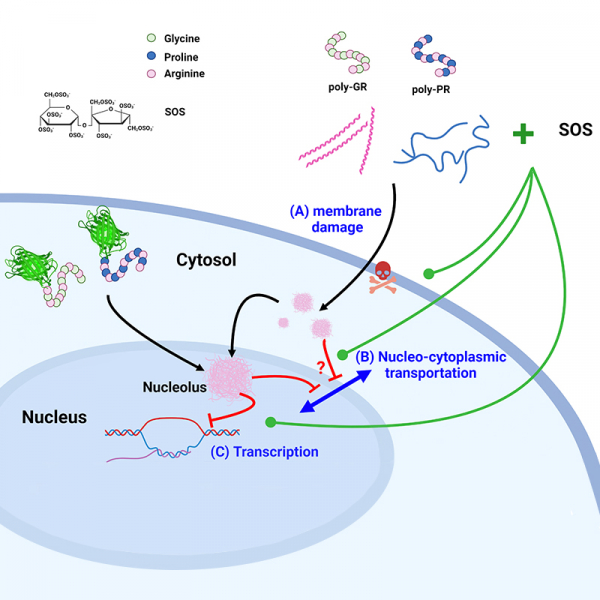Hexanucleotide repeat expansion in C9ORF72 (C9) is the most prevalent mutation among amyotrophic lateral sclerosis (ALS) patients. The patients carry over ~30 to hundreds or thousands of repeats translated to dipeptide repeats (DPRs) where poly-glycine-arginine (GR) and poly-proline-arginine (PR) are most toxic. The structure-function relationship is still unknown. Here, we examined the minimal neurotoxic repeat number of poly-GR and found that extension of the repeat number led to a loose helical structure disrupting plasma and nuclear membrane. Poly-GR/PR bound to nucleotides and interfered with transcription. We screened and identified a sulfated disaccharide that bound to poly-GR/PR and rescued poly-GR/PR–induced toxicity in neuroblastoma and C9-ALS-iPSC–derived motor neurons. The compound rescued the shortened life span and defective locomotion in poly-GR/PR expressing Drosophila model and improved motor behavior in poly-GR–injected mouse model. Overall, our results reveal structural and toxicity mechanisms for poly-GR/PR and facilitate therapeutic development for C9-ALS.
Language
週五, 23 二月 2024 15:20
